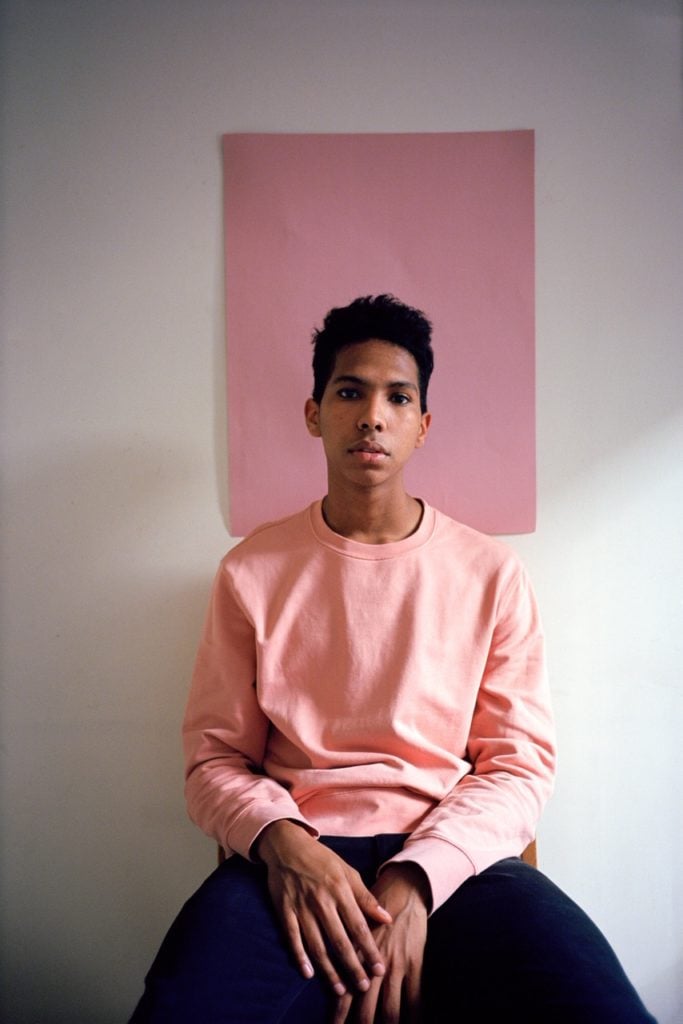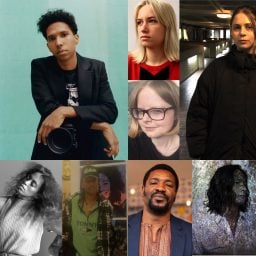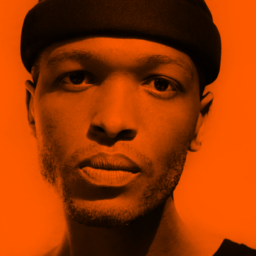On the second floor of the newly opened International Center of Photography in New York, a soundtrack of plaintive synth chords plays as part of Chasing Pink, Found Red (2019), a video installation by 24-year-old artist Tyler Mitchell.
The video depicts a bucolic picnic scene where young black men and women lounge on a red checkered blanket, sun-drunk and blissful. But snippets of jarring audio also play throughout, with speakers describing instances where they were made to feel inferior because of their race.
“The stories came from all over the world, but they were very similar,” says Mitchell, who put out a call for the recordings to his 265,000 Instagram followers last year. “They were usually stories from someone’s childhood, a memory or a small moment that I call a micro-trauma, in which you’re reminded of the ways in which you’re not able to be as free as you want to be.”
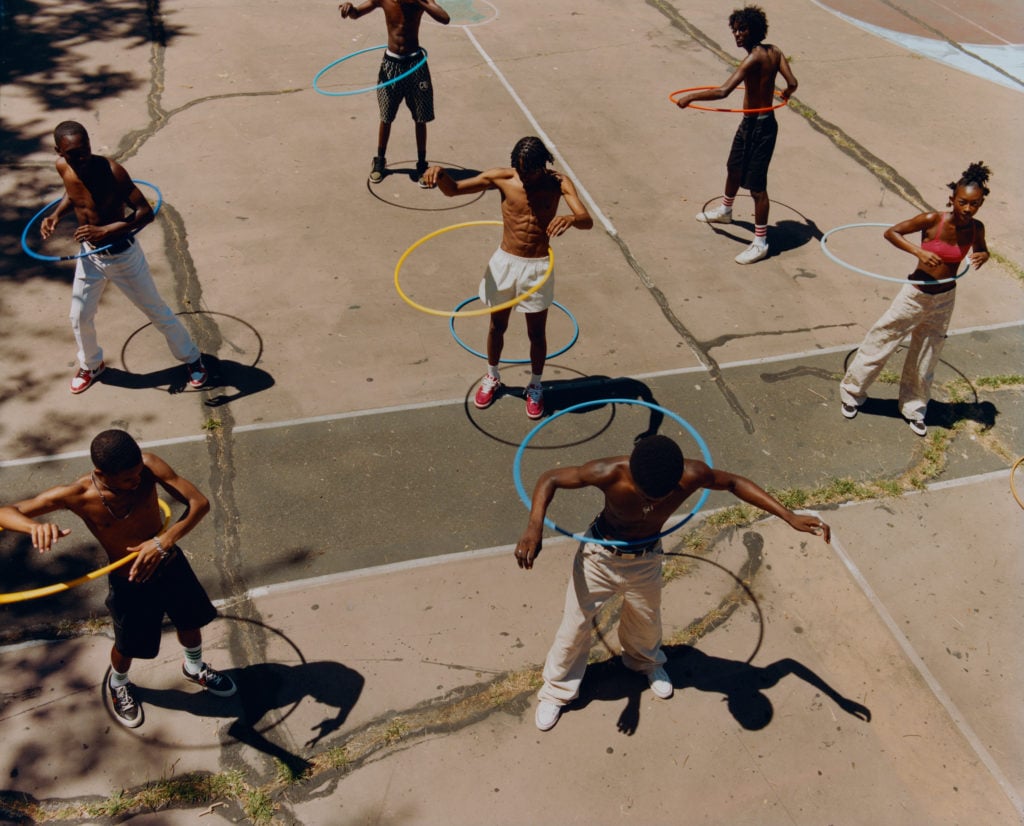
Tyler Mitchell, Untitled (Group Hula Hoop) (2019). © Tyler Mitchell. Courtesy of the International Center of Photography.
Mitchell has quickly and suddenly become one of the most in-demand photographers in the world. The poster child of the “new black vanguard,” a term coined by writer Antwaun Sargent, Mitchell has shot spreads for magazines like i-D and the Fader and fashion campaigns for Marc Jacobs and Comme des Garçons. In 2018, his pastoral portrait of Beyoncé in the English countryside graced the front of Vogue, making him the first black photographer—and one of the youngest people ever—to create a cover in the magazine’s 125-year history. Later that year, a photo from the series was acquired by the Smithsonian National Portrait Gallery. Mitchell was just 23.
The title of his new show, “I Can Make You Feel Good,” comes from a Shalamar song of the same name, which Mitchell heard in the Atlanta airport in 2018. It has since become a kind of credo for the young artist—a pledge that he makes to his audience. (It also served as the title of his first exhibition at the Fotografiemuseum in Amsterdam.)
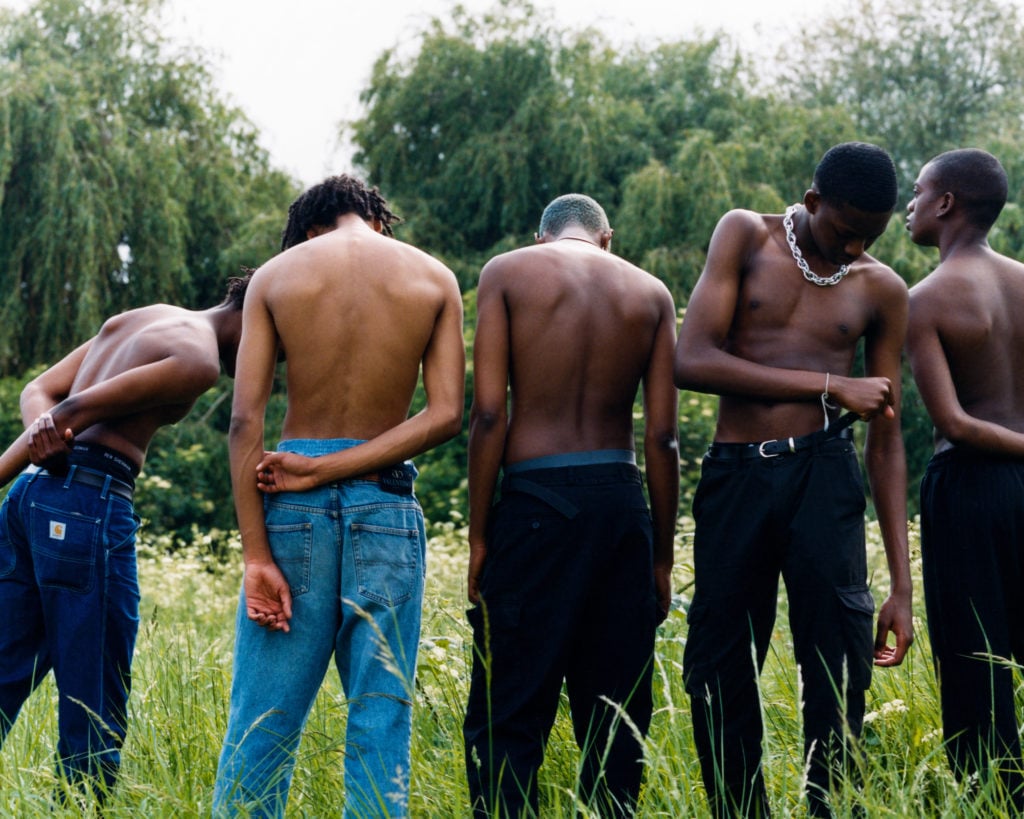
Tyler Mitchell, Boys of Walthamstow (2018). © Tyler Mitchell. Courtesy of the International Center of Photography.
“It’s a literal statement for what the show is trying to do,” Mitchell says of the show’s title.
We’re sitting in one of the museums janitors’ closets, which has been turned into a makeshift green room with a card table and a cluster of water bottles. Beads of water descend from a network of pipes and wires in the open ceiling above (the building’s renovation is still being finished). Even so, with his pink socks and pink nails and matching vintage shirt, Tyler is glamorous.
“Some exhibitions have very cryptic titles,” he says. “It’s all just smoke and mirrors. A lot of my work is about removing all that. I’m not really addressing the fine-art audience in a direct way. I’m addressing a wider audience while using the institution as a way to build a more critical dialogue.”
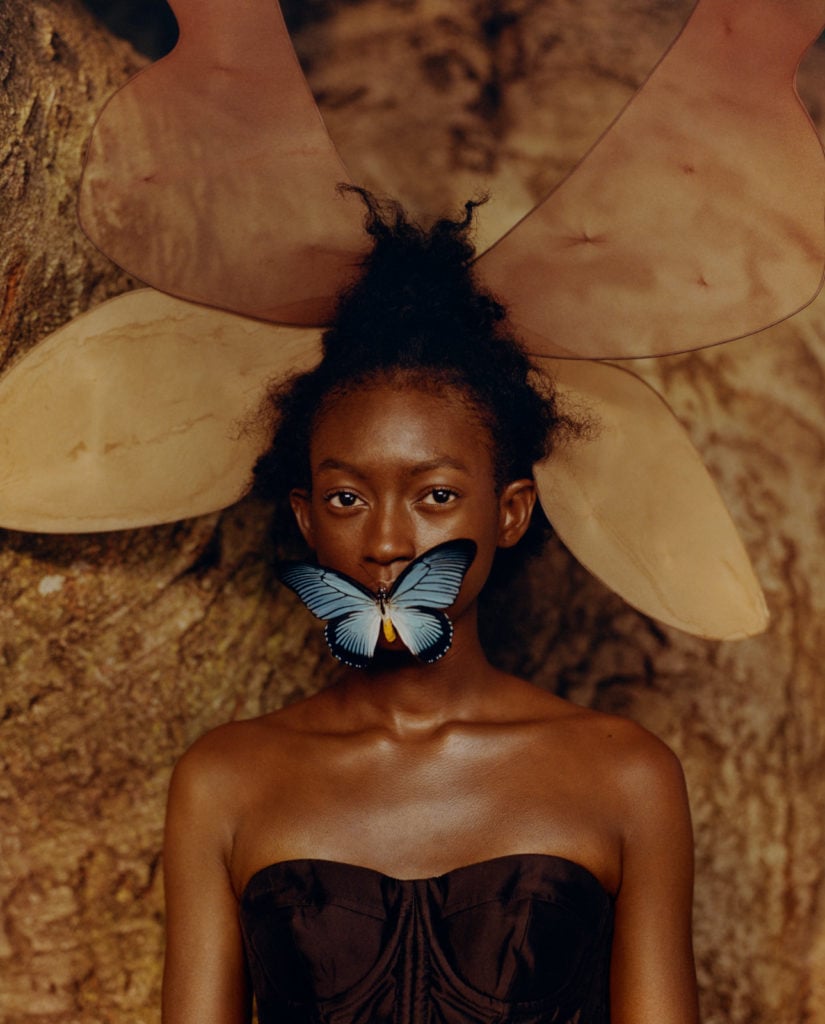
Tyler Mitchell, Untitled (Butterfly) (2019). © Tyler Mitchell. Courtesy of the International Center of Photography.
Mitchell grew up in Marietta, Georgia, a sprawling suburb of Atlanta. He picked up his first camera at 13, wanting to make videos of his friends skateboarding. He learned to use the camera through Youtube tutorials and posted his videos on Tumblr, where he found a loyal following.
“I don’t know if talent was the word,” he says, considering his early forays into photography. “I don’t even know if I have talent now, necessarily. I just think I have a point of view. I have a stylized way of working.”
Indeed, the roots of those early videos still peek through Mitchell’s work today: sunny scenes and phatic expressions of youthful community; an interest in the body in motion; and an intimate look at unadulterated joy.
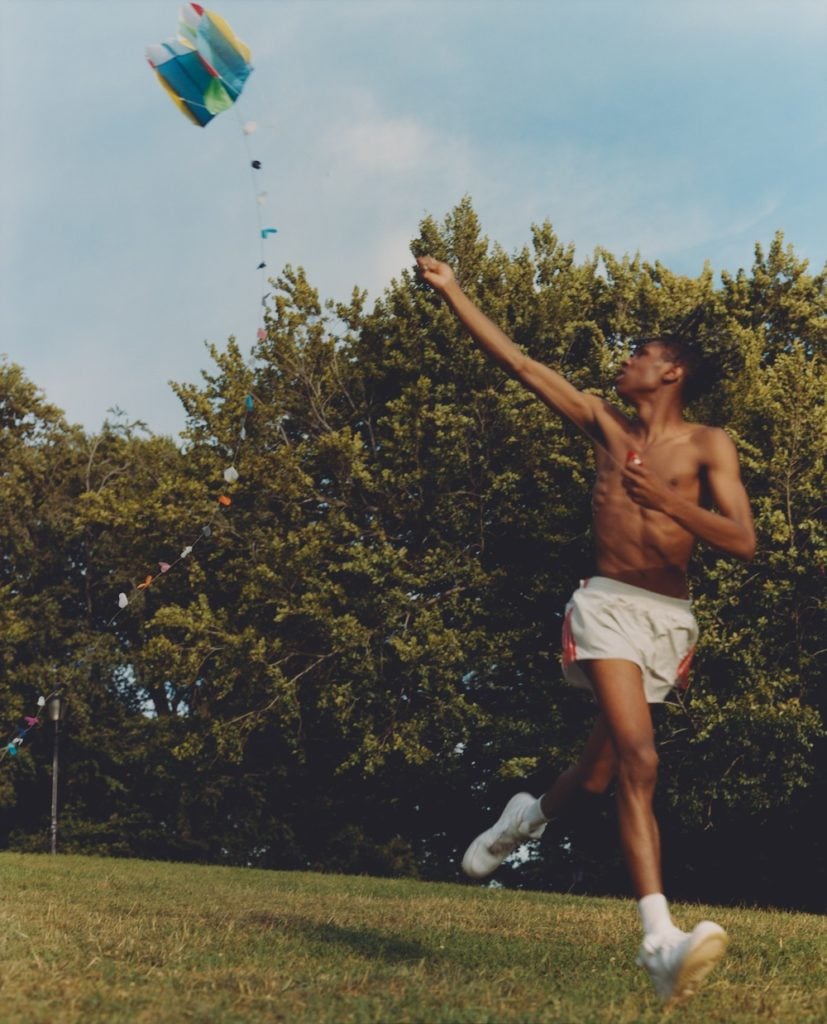
Tyler Mitchell, Untitled (Kite) (2019). © Tyler Mitchell. Courtesy of the International Center of Photography.
“The candy-colored pallets and use of natural light—these are ways to maintain legibility in my images,” he says. “That’s what commercial means: legible. I like to play with that level of accessibility in photography.”
He studied film at NYU’s Tisch School of the Arts, though he spent a lot of time in the photo department as well. In his sophomore year, an assignment to photograph Kevin Abstract, a founding member of Brockhampton, for the Fader put him on many photo editors’ radars, which he parlayed into additional assignments. By the time he graduated in 2017, he was a rising star. The Beyoncé shoot came a year later.
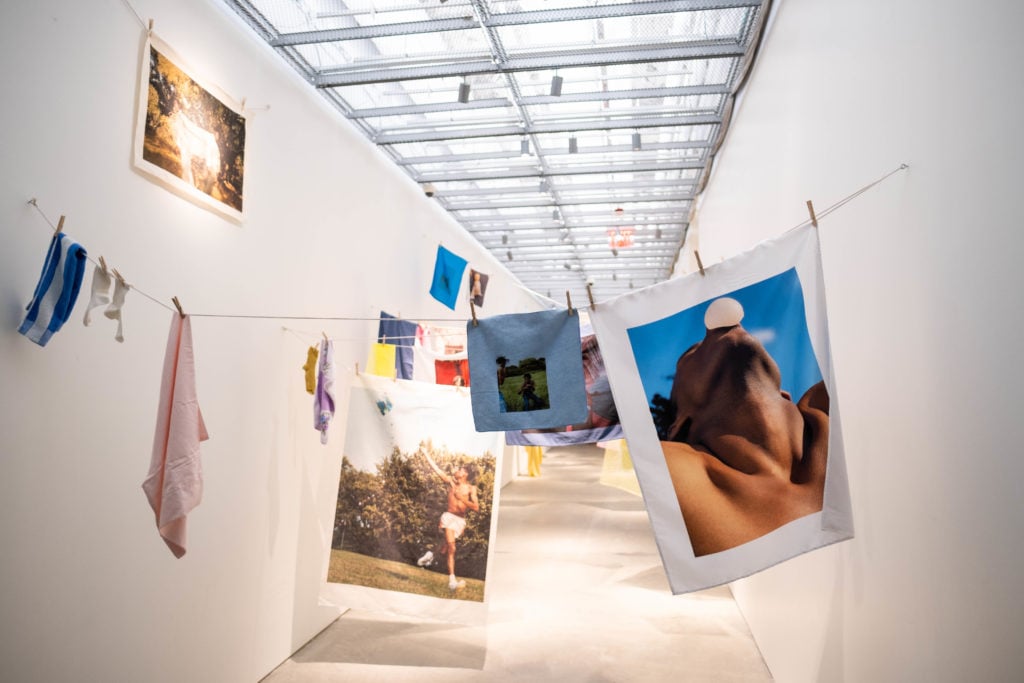
Installation view of “Tyler Mitchell: I Can Make You Feel Good” at the International Center of Photography, 2020. © ICP. Photo: Michael C Mooney.
The ICP show is, technically, just Mitchell’s second solo art-world outing. But that distinction doesn’t mean much to him.
“Tyler’s from a generation of artists that don’t see the same boundaries that we once did,” says Isolde Brielmaier, the show’s curator. “They’re not burdened with the same conceptual, aesthetic, and genre definitions that artists have traditionally had to contend with. That’s one of the reasons I was drawn to his work, because he is so fluid.”
Brielmaier points to a hallway-spanning installation where Mitchell’s portraits are printed on various found fabrics, from pastel pillowcases and washcloths, to sateen swatches that twinkle at the right angles, all hung from clotheslines.
The installation, which is also the highlight of the show, fuses fashion with fine art, photography with sculpture, art-historical references with the 2020 zeitgeist. Like Chasing Pink, Found Red, it evinces a dreamy landscape undercut by the insidious intrusion of reality.
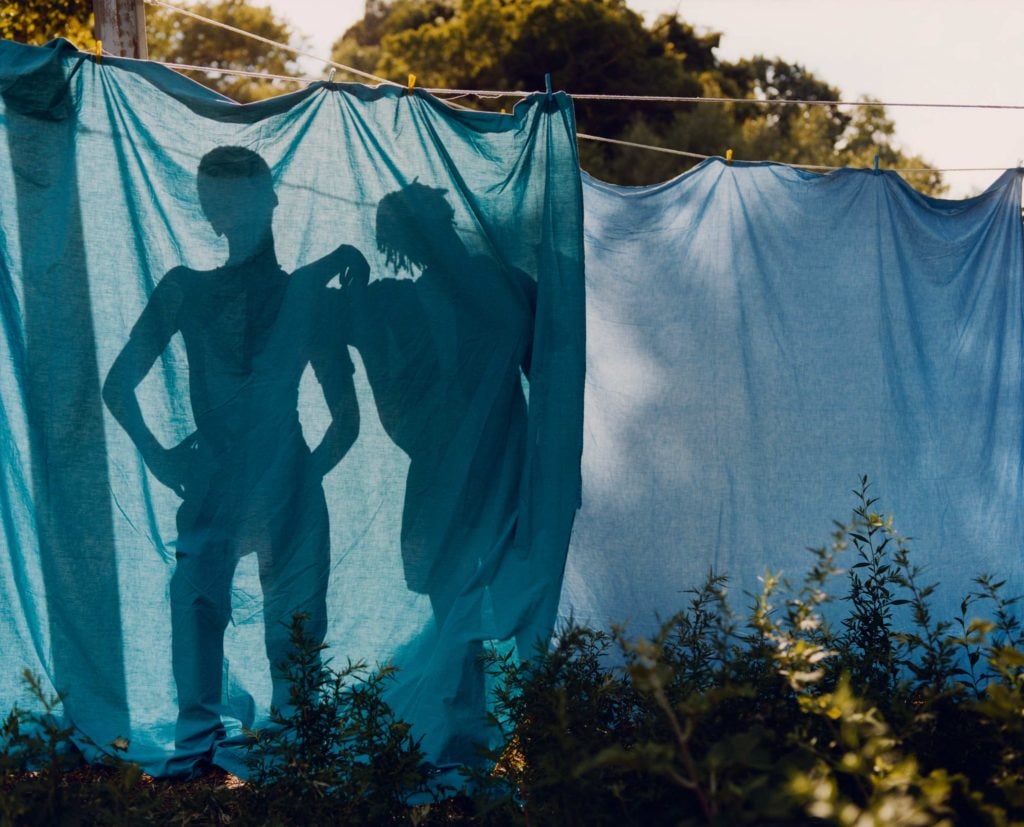
Tyler Mitchell, Untitled (Blue Laundry Line) (2019). © Tyler Mitchell. Courtesy of the International Center of Photography.
“He’s positing an idea of what a black paradise could look like, but it’s multi-layered,” Brielmaier says. “It references domesticity, servitude, and other positions that black people have been relegated to in this country.”
Many people, the curator notes, have been quick to consider Mitchell’s images as joyful forms of resistance. “Particularly for black people, we’re always represented striving, struggling, suffering, or fighting,” Brielmaier says. “So having joy is incredibly powerful.”
But that doesn’t capture the complexities of the young artist’s work.
“People say that black utopia is a counter-narrative, but it can only be a counter-narrative if that’s your operative narrative to begin with. I don’t think it is for Tyler,” Brielmaier says. “If you move beyond that narrative, you enter into this whole new space.”
“I think that space is where Tyler’s artistic and conceptual head is at.”
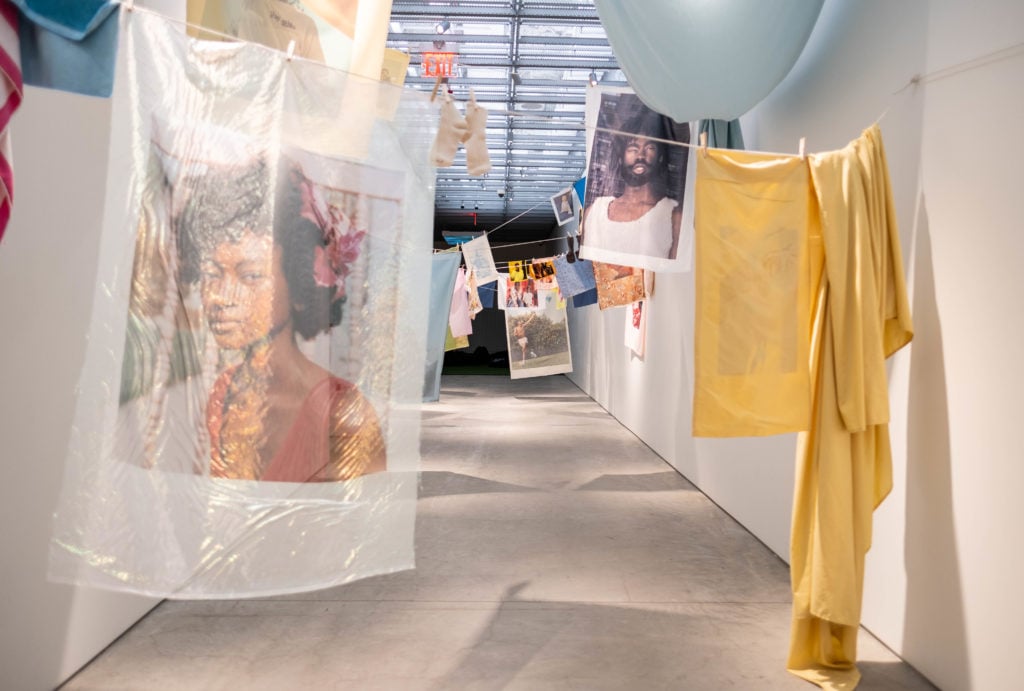
Installation view of “Tyler Mitchell: I Can Make You Feel Good” at the International Center of Photography, 2020. © ICP. Photo: Michael C Mooney.
“Tyler Mitchell: I Can Make You Feel Good” is on view now through May 18, 2020, at the International Center of Photography.
Follow Artnet News on Facebook:
Want to stay ahead of the art world? Subscribe to our newsletter to get the breaking news, eye-opening interviews, and incisive critical takes that drive the conversation forward.
